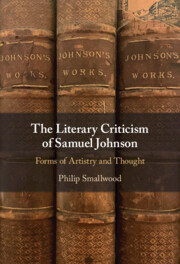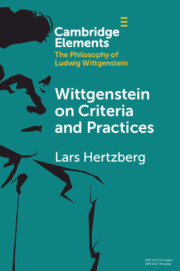Refine search
Actions for selected content:
66 results
10 - Signal Detection Theory: How to Detect the Important Signal against the Distracting Background and Take Action as Appropriate Based on the Signal
- from Part III - Applications, Examples, and Selected Topics
-
- Book:
- Making Decisions: Analytics, Cognition, and Application
- Published online:
- 23 October 2025
- Print publication:
- 06 November 2025, pp 127-146
-
- Chapter
- Export citation
19 - Evaluation of the Validity of International Legitimacy
- from Part V - International Legitimacy and Change
-
- Book:
- The Law and Politics of International Legitimacy
- Published online:
- 14 July 2025
- Print publication:
- 24 July 2025, pp 361-370
-
- Chapter
- Export citation
5 - Political Legitimacy as Evaluation and Judgment
- from Part II - Political Legitimacy and Theory of Politics
-
- Book:
- The Law and Politics of International Legitimacy
- Published online:
- 14 July 2025
- Print publication:
- 24 July 2025, pp 68-91
-
- Chapter
- Export citation
9 - Legitimacy and International Membership
- from Part IV - Construction of Legitimacy in International Law
-
- Book:
- The Law and Politics of International Legitimacy
- Published online:
- 14 July 2025
- Print publication:
- 24 July 2025, pp 161-172
-
- Chapter
- Export citation
Chapter 13 - Critical Decisions in Ventilation with Acute Neurologic Injury
-
-
- Book:
- Clinical Neurorespiratory Medicine
- Published online:
- 26 May 2025
- Print publication:
- 19 June 2025, pp 149-158
-
- Chapter
- Export citation
Chapter 3 - The Good, the Bad, and the Ugly
- from Part I - Setting the Stage
-
- Book:
- Looking Ahead
- Published online:
- 20 March 2025
- Print publication:
- 06 March 2025, pp 18-28
-
- Chapter
- Export citation
16 - The History of Jesus in Biblical Scholarship
- from Part III - Ethics, Theology, and Critical Scholarship
-
-
- Book:
- The New Cambridge Companion to Jesus
- Published online:
- 15 November 2024
- Print publication:
- 05 December 2024, pp 265-280
-
- Chapter
- Export citation
20 - Proprietary remedies
- from Part 7 - Proprietary remedies
-
- Book:
- Remedies in Australian Private Law
- Published online:
- 25 October 2024
- Print publication:
- 12 November 2024, pp 528-550
-
- Chapter
- Export citation
4 - Looking for God
-
- Book:
- The Theological Imagination
- Published online:
- 09 November 2024
- Print publication:
- 07 November 2024, pp 105-126
-
- Chapter
- Export citation
An operationalization framework for lifecycle health technology assessment: a Health Technology Assessment International Global Policy Forum Task Force report
- Part of
-
- Journal:
- International Journal of Technology Assessment in Health Care / Volume 40 / Issue 1 / 2024
- Published online by Cambridge University Press:
- 16 May 2024, e45
-
- Article
-
- You have access
- Open access
- HTML
- Export citation
Chapter 9 - Epicureans on Preconceptions and Other Concepts
-
-
- Book:
- Conceptualising Concepts in Greek Philosophy
- Published online:
- 25 April 2024
- Print publication:
- 02 May 2024, pp 203-236
-
- Chapter
-
- You have access
- Open access
- HTML
- Export citation
Chapter 7 - Post–Cardiac Arrest EEG
- from Part I - Introduction
-
- Book:
- Critical Care EEG Basics
- Published online:
- 22 February 2024
- Print publication:
- 29 February 2024, pp 99-108
-
- Chapter
- Export citation
9 - Screening
- from Part 1 - The Public Health Toolkit
-
-
- Book:
- Essential Public Health
- Published online:
- 01 December 2023
- Print publication:
- 14 December 2023, pp 163-182
-
- Chapter
- Export citation
Chapter 2 - Criteria
- from Part II - Perceiving Procedural Fairness
-
- Book:
- The Fair Process Effect
- Published online:
- 26 October 2023
- Print publication:
- 09 November 2023, pp 21-30
-
- Chapter
- Export citation
Introduction
-
- Book:
- The Literary Criticism of Samuel Johnson
- Published online:
- 07 September 2023
- Print publication:
- 21 September 2023, pp 1-14
-
- Chapter
-
- You have access
- Open access
- HTML
- Export citation

The Literary Criticism of Samuel Johnson
- Forms of Artistry and Thought
-
- Published online:
- 07 September 2023
- Print publication:
- 21 September 2023
-
- Book
-
- You have access
- Open access
- Export citation
1 - The Claiming of Community
-
- Book:
- Stanley Cavell's Democratic Perfectionism
- Published online:
- 17 August 2023
- Print publication:
- 31 August 2023, pp 26-54
-
- Chapter
- Export citation
Sex-specific differences in neuropsychological profiles of mild cognitive impairment in a hospital-based clinical sample
-
- Journal:
- Journal of the International Neuropsychological Society / Volume 29 / Issue 9 / November 2023
- Published online by Cambridge University Press:
- 03 March 2023, pp. 821-830
-
- Article
-
- You have access
- Open access
- HTML
- Export citation
1 - The Content of Coherence
-
- Book:
- Manifestations of Coherence and Investor-State Arbitration
- Published online:
- 13 December 2022
- Print publication:
- 19 January 2023, pp 11-35
-
- Chapter
- Export citation

Wittgenstein on Criteria and Practices
-
- Published online:
- 08 December 2022
- Print publication:
- 05 January 2023
-
- Element
- Export citation
